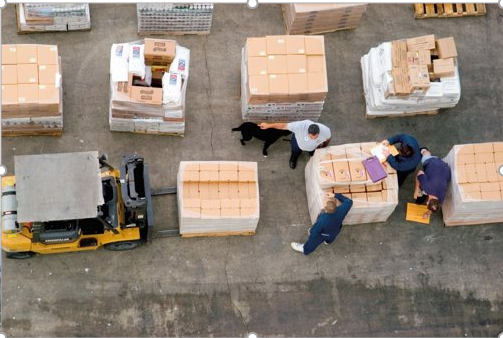New Edition of Leading Industry Guidelines on Combatting Drug Trafficking

Criminal gangs are increasingly exploiting merchant shipping to traffic large volumes of illicit drugs to markets worldwide. Nearly 90% of all cocaine, 45% of all cannabis, and 30% of all amphetamine type stimulants seized globally during January 2017 to April 2020 were trafficked via sea, despite the best efforts of the shipping industries to combat this activity. We all share a collective responsibility to assist in combatting this illegal traffic. This is the message from the International Chamber of Shipping (ICS) in its latest publication, Drug Trafficking and Drug Abuse On Board Ship: Guidelines for Owners and Masters on Preparation, Prevention, Protection and Response.
“The global value of the drugs trade is estimated at USD 426 billion, and the problems from illicit drug trafficking continue to expand and diversify,” says Guy Platten, Secretary General of the International Chamber of Shipping.
“Traffickers use shipping as a vector for their illicit cargoes as ships present opportunities for high volume movements from producing to consuming countries. Drug traffickers exploit society’s need to move goods and people across frontiers, and shipping is a key mode in that transport chain. We all share a collective responsibility to assist in combatting this illegal traffic and this latest publication ensures that shipowners and Masters are fully briefed on the best practices to combat this criminal trade.”
Published in conjunction with Witherbys, Drug Trafficking and Drug Abuse On Board Ship is aimed at supporting the industry in meeting this collective responsibility. Considered the leading industry publication on the topic, the sixth edition has been fully updated to offer guidance on how to protect the ship and the crew and reduce the risk of drug trafficking occurring on board. It also provides advice on how to respond when faced with drug trafficking and drug abuse at sea.
The new Guidelines also take into account the impact and implications of the COVID-19 pandemic which has had an ongoing effect on drug trafficking and drug abuse, due to the changing nature of the management of national borders and the alteration of established behaviours.
Drug Trafficking and Drug Abuse On Board Ship provides essential professional guidance for shipping companies, ports, ships’ officers, Masters, cargo owners, government officials, customs and the maritime industry as a whole. It identifies shipboard operational considerations and responses, as well as the training and procedures that are required both ashore and on board.
The Guidelines also explore all aspects of protection in port facilities, along with areas of cooperation between ports and ships that can help prevent drug trafficking from taking place. Whether this activity is orchestrated by criminal or terrorist organisations, the methodologies employed are sophisticated and dynamic. Successful responses need to be equally sophisticated and require a comprehensive and strategic approach to security, and the Guidelines outline a number of specific measures are detail
Since drug trafficking is an international criminal activity, improved collaboration between nations, as well as between ships and port facilities, is essential.
The latest edition of Drug Trafficking and Drug Abuse On Board Ship also includes a section on the implications of cyber risks for drug trafficking.
For more information please visit: Witherbys.